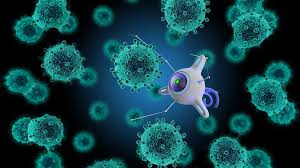
Breaking News
 Interview 1991 - The Origins of the Philosophy of Liberty with Ken Schoolland
Interview 1991 - The Origins of the Philosophy of Liberty with Ken Schoolland
 Silversqueeze: How We Got Here, Where We're Going
Silversqueeze: How We Got Here, Where We're Going
 I asked Grok for Its Opinion on "Grok vs ChatGPT, Which Is Better?"
I asked Grok for Its Opinion on "Grok vs ChatGPT, Which Is Better?"
 You'll own NOTHING and be happy?
You'll own NOTHING and be happy?
Top Tech News
 Build a Greenhouse HEATER that Lasts 10-15 DAYS!
Build a Greenhouse HEATER that Lasts 10-15 DAYS!
 Look at the genius idea he came up with using this tank that nobody wanted
Look at the genius idea he came up with using this tank that nobody wanted
 Latest Comet 3I Atlas Anomolies Like the Impossible 600,000 Mile Long Sunward Tail
Latest Comet 3I Atlas Anomolies Like the Impossible 600,000 Mile Long Sunward Tail
 Tesla Just Opened Its Biggest Supercharger Station Ever--And It's Powered By Solar And Batteries
Tesla Just Opened Its Biggest Supercharger Station Ever--And It's Powered By Solar And Batteries
 Your body already knows how to regrow limbs. We just haven't figured out how to turn it on yet.
Your body already knows how to regrow limbs. We just haven't figured out how to turn it on yet.
 We've wiretapped the gut-brain hotline to decode signals driving disease
We've wiretapped the gut-brain hotline to decode signals driving disease
 3D-printable concrete alternative hardens in three days, not four weeks
3D-printable concrete alternative hardens in three days, not four weeks
 Could satellite-beaming planes and airships make SpaceX's Starlink obsolete?
Could satellite-beaming planes and airships make SpaceX's Starlink obsolete?
DNA Nanobots Used Bacteria's Chemical Communication and....

Bio-inspired Quorum Sensing in robots fabricated from DNA origami can communicate by transmitting and receiving diffusing chemical signals. The mechanism has features such as programmable response thresholds and quorum quenching, and is capable of being triggered by proximity of a specific target cell. Nanoscale robots with swarm intelligence could carry out tasks that have been so far unachievable in diverse fields such as industry, manufacturing and medicine.
Quorum Sensing (QS) is a well-studied example of collective behavior. See the 2013 TED Talk below on Bacterial quorum sensing chemical communication. This mechanism of cell-cell communication in bacteria utilizes secreted signal molecules to coordinate the behavior of the group. Linking signal concentration to local population density enables each single bacterium to measure population size. This ability to communicate both within and between species is critical for bacterial survival and interaction in natural habitats and has likely appeared early in evolution. Detection of a minimal threshold of signal molecules, termed autoinducers, triggers gene expression and subsequent behavior response. Using these signaling systems, bacteria synchronize particular behaviors on a population-wide scale and thus function as multicellular organisms.
QS-inspired approaches have been adopted in artificial systems, including mobile robots and wireless sensor networks, and naturally occurring genes have been harnessed in synthetic biology to implement QS at the cellular level.

 First totally synthetic human brain model has been realized
First totally synthetic human brain model has been realized Mach-23 potato gun to shoot satellites into space
Mach-23 potato gun to shoot satellites into space

